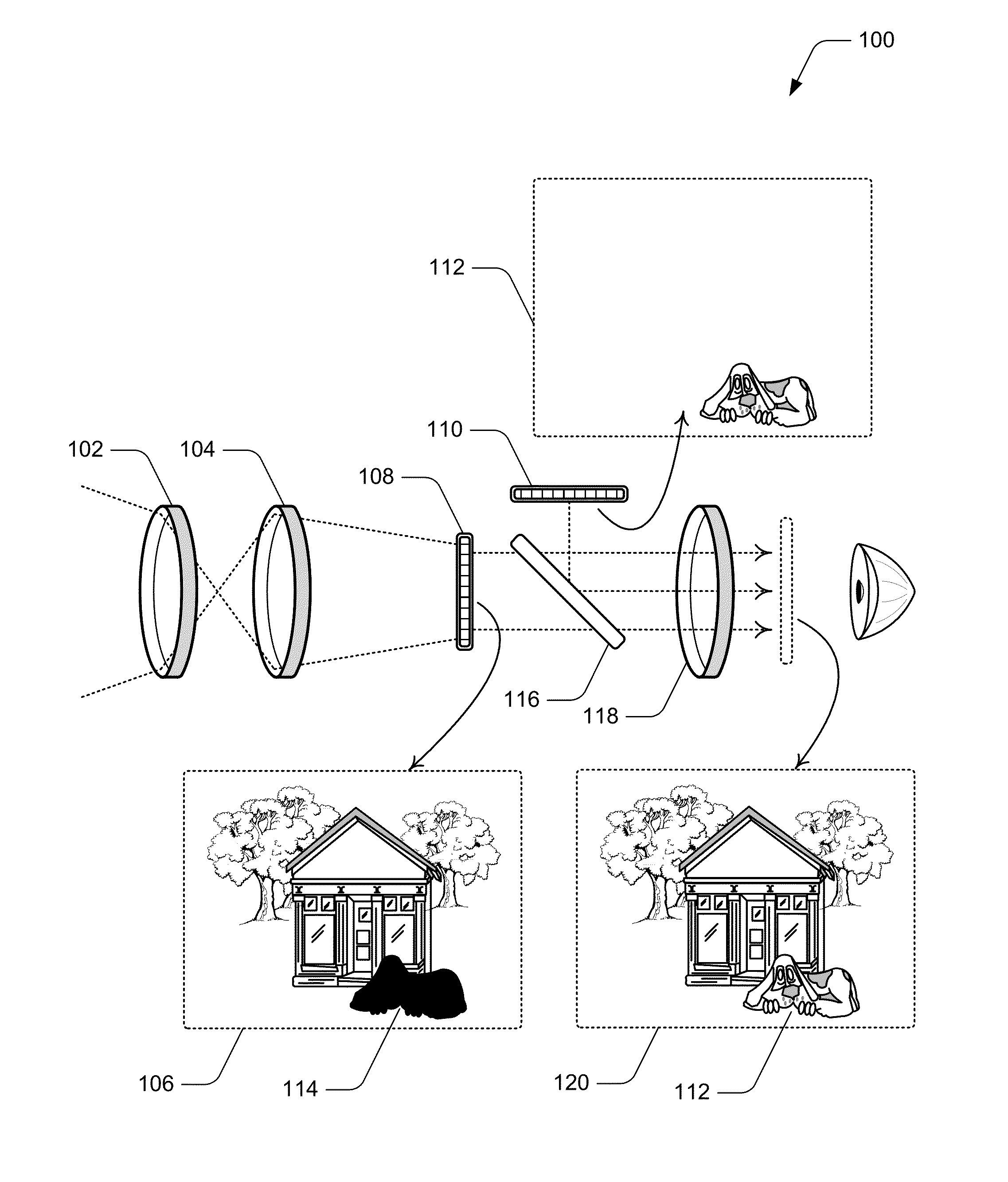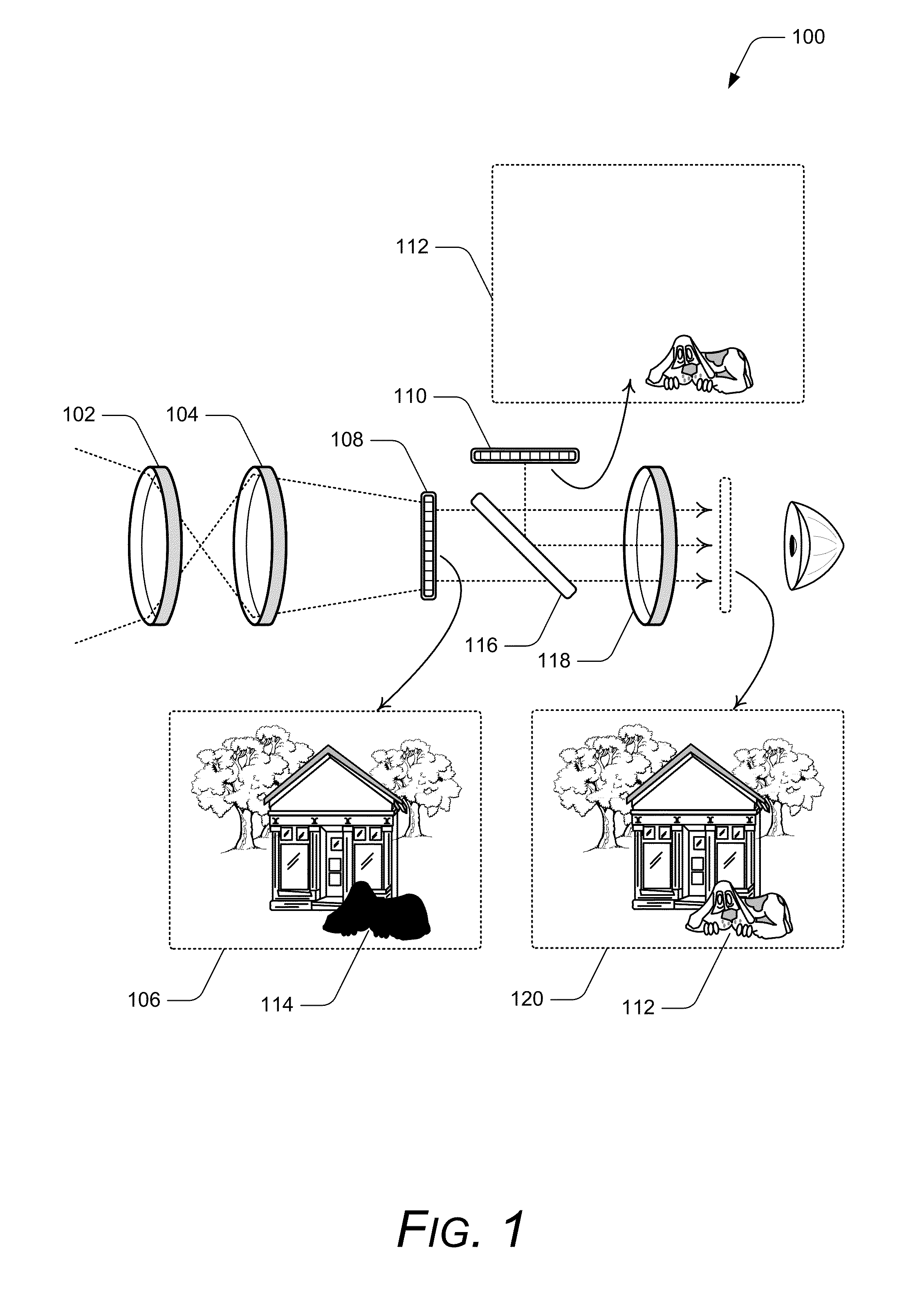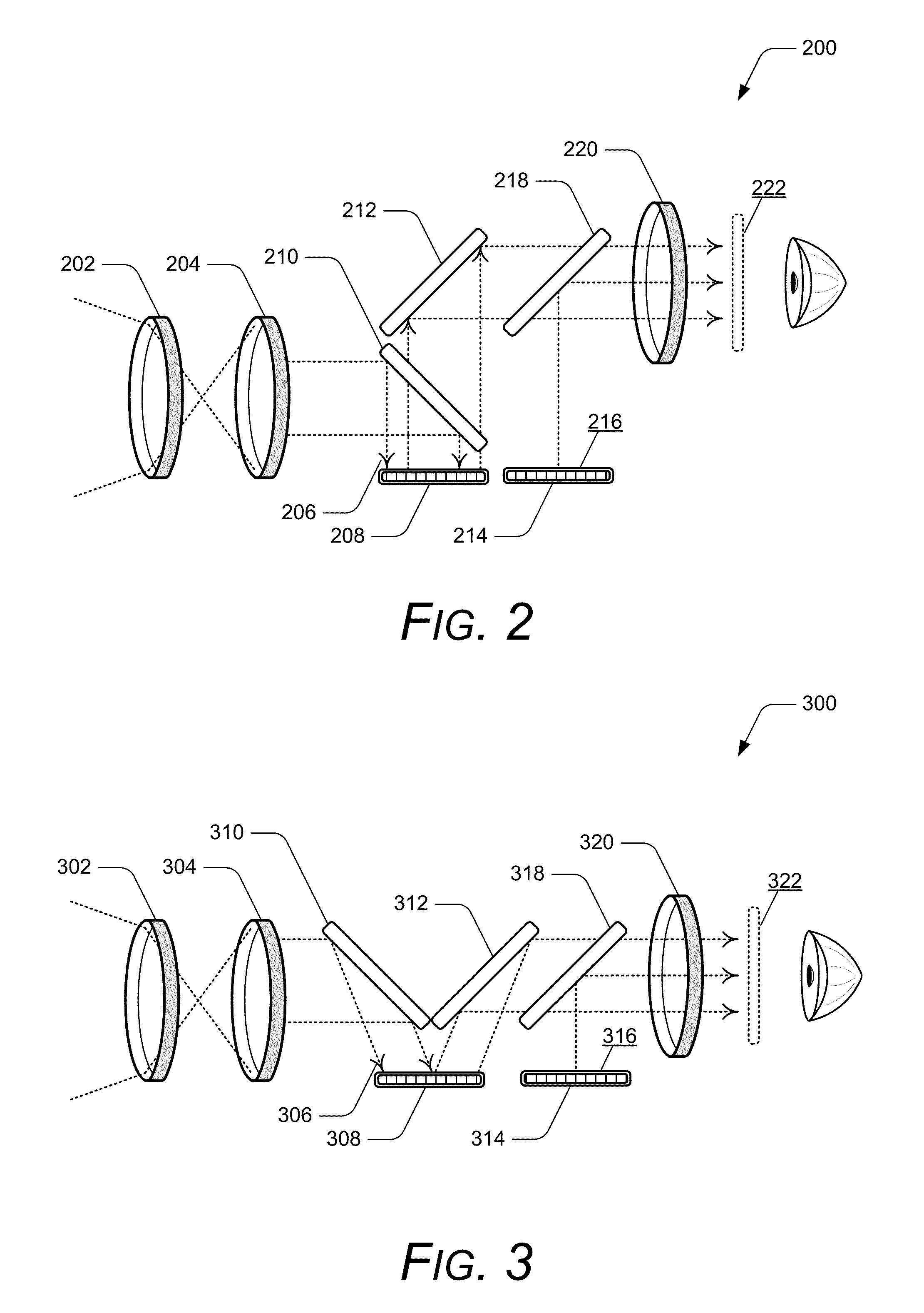Pixel opacity for augmented reality
- Summary
- Abstract
- Description
- Claims
- Application Information
AI Technical Summary
Benefits of technology
Problems solved by technology
Method used
Image
Examples
Embodiment Construction
[0011]Embodiments of pixel opacity for augmented reality are described. As noted above, a challenge to the implementation of augmented reality is generating virtual images so that they appear realistic in a real environment when viewed by a user through a wearable display device, such as a head-mounted display (HMD). A virtual image, such as any type of object, video, text, graphic, and the like, may appear semi-translucent to a user when the virtual image is displayed over a real environment. Pixel opacity for augmented reality provides a technique to enhance the contrast of a virtual image relative to an environment image when the virtual image is displayed to appear as part of the environment, and without the virtual image appearing translucent.
[0012]In embodiments, an imaging application is implemented to generate a virtual image for display to appear as part of a surrounding environment when viewed by a user through left and right display lens systems of a wearable display devi...
PUM
 Login to View More
Login to View More Abstract
Description
Claims
Application Information
 Login to View More
Login to View More - R&D
- Intellectual Property
- Life Sciences
- Materials
- Tech Scout
- Unparalleled Data Quality
- Higher Quality Content
- 60% Fewer Hallucinations
Browse by: Latest US Patents, China's latest patents, Technical Efficacy Thesaurus, Application Domain, Technology Topic, Popular Technical Reports.
© 2025 PatSnap. All rights reserved.Legal|Privacy policy|Modern Slavery Act Transparency Statement|Sitemap|About US| Contact US: help@patsnap.com



